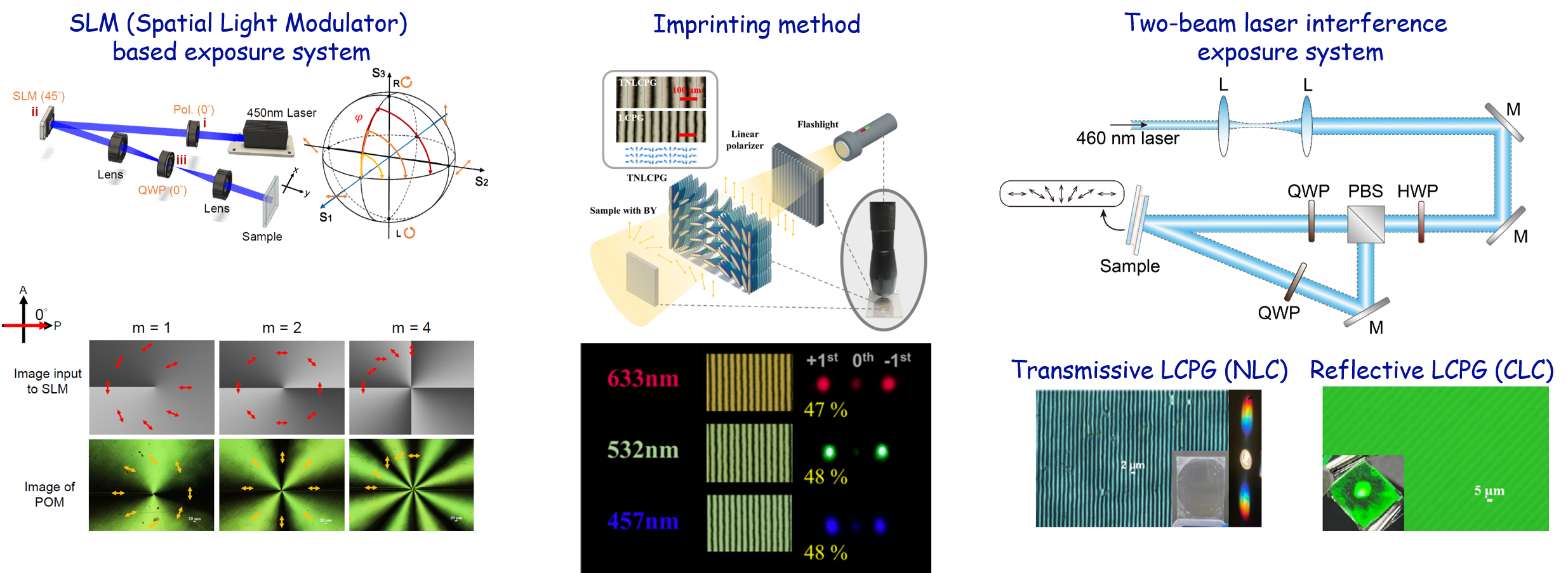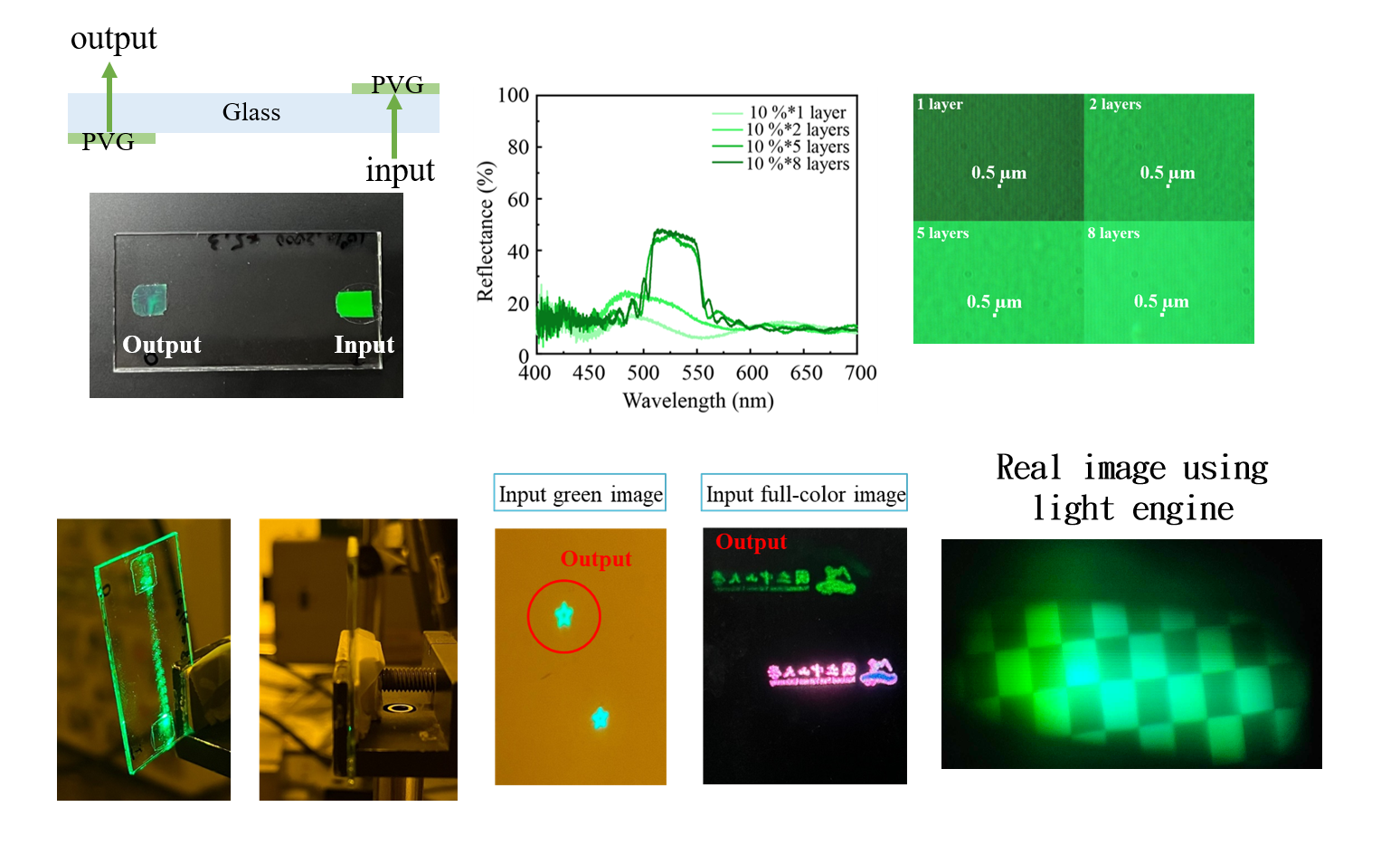Pancharatnam–Berry Phase Optical Elements
Pancharatnam–Berry phase optical elements (PBOEs) are planar optical components that generate phase differences by spatially modulating the polarization of incident light. Among various material platforms, liquid crystal-based PBOEs offer significant advantages, including high tunability, polarization selectivity, exceptional optical diffraction efficiency, and simple fabrication processes. We have been dedicated to designing and developing various liquid crystal PBOEs (LCPBOEs) for applications in display technologies and diverse photonic fields.
The fabrication process of LCPBOEs
Over the past few years, we have established a comprehensive development process for LCPBOEs. This includes material selection, the creation of photo-alignment exposure systems, the fabrication of both passive and active components, and the application of these elements across various fields
Photo-alignment exposure systems

We have integrated photo-alignment materials with advanced exposure methods to achieve high-quality and stable liquid crystal alignment, essential for LCPBOEs. To support this, we developed three exposure systems:
- SLM (Spatial Light Modulator) Based Exposure System: Offers dynamic and programmable pattern generation, providing flexibility in designing PB phase structures.
- Imprinting Method: A cost-effective and scalable approach, ideal for mass production of PB optical elements.
- Two-Beam Laser Interference Exposure System: Ensures high-precision periodic alignment, enabling the fabrication of complex PB phase patterns with excellent accuracy."
Passive and actives PBOEs

We have developed a variety of LCPBOEs, including polarization gratings, lenses, and Q-plates, utilizing different exposure systems. Furthermore, by carefully selecting liquid crystal materials, we have successfully fabricated both passive and active components, enabling the operation of both T- and R-modes.
- Opt. Lett. 44, 187-190 (2019).
- Opt. Lett. 45, 5323-5326 (2020).
- Opt. Lett. 47, 4020-4023 (2022).
Tunable polarization volume gratings

We have developed a range of active PVGs with versatile tuning capabilities, including switchable operation between T- and R-modes, as well as adjustable reflectance and reflection colors.
- Optics & Laser Technology 180, 111530 (2025).
- Adv. Mater. Technol., 2400726-1~8 (2024).
- Materials Chemistry and Physics 329, 130093 (2025).
Waveguide-based AR display using PVGs as couplers

Recently, we began applying our previously fabricated diffractive liquid crystal optical elements to AR/VR near-eye display systems. By utilizing PVGs as optical couplers, we developed a waveguide-based AR display system. Images generated by a laser projector or light engine were integrated into the AR system to evaluate and enhance its display quality.




